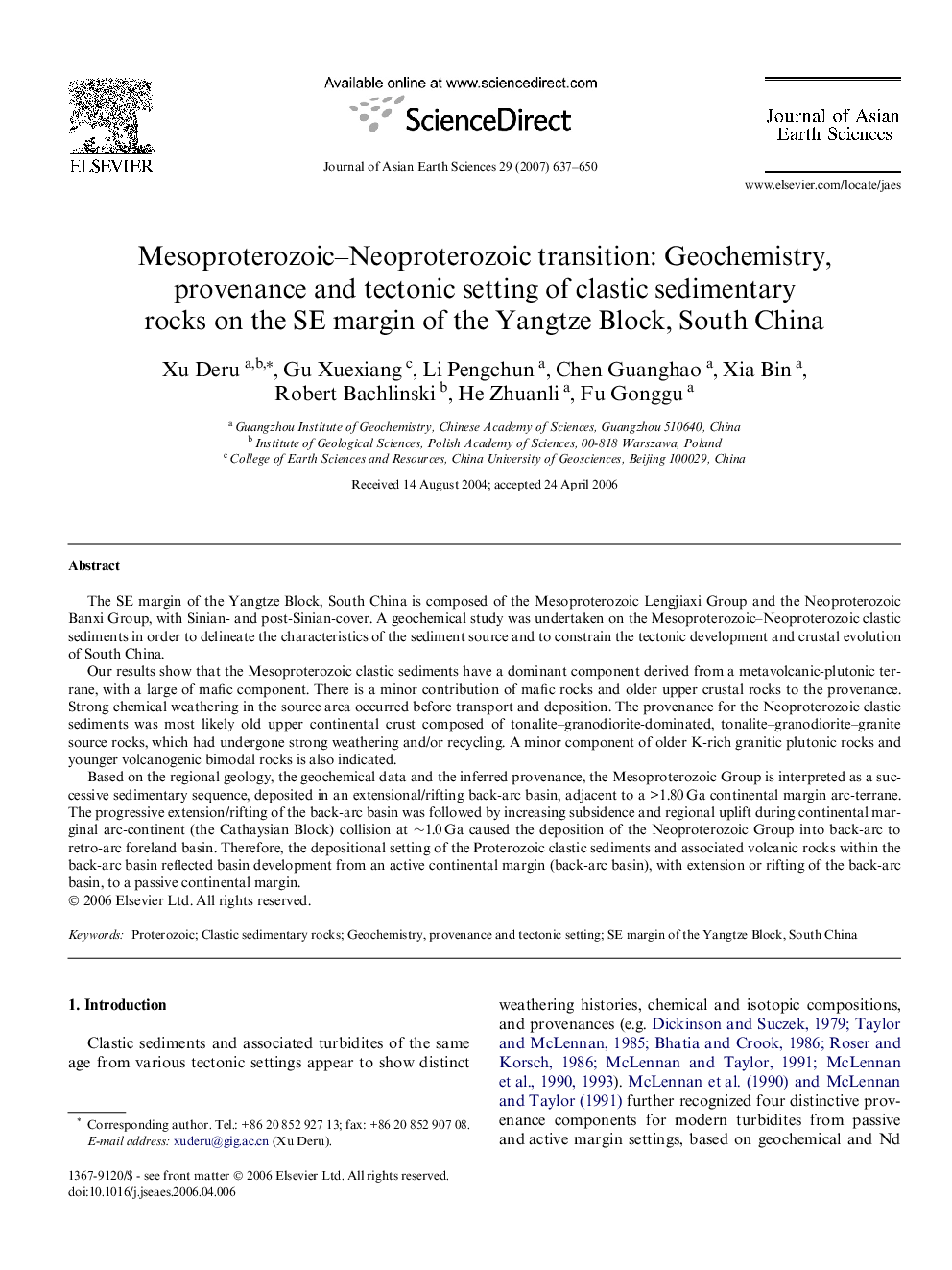| Article ID | Journal | Published Year | Pages | File Type |
|---|---|---|---|---|
| 4732571 | Journal of Asian Earth Sciences | 2007 | 14 Pages |
The SE margin of the Yangtze Block, South China is composed of the Mesoproterozoic Lengjiaxi Group and the Neoproterozoic Banxi Group, with Sinian- and post-Sinian-cover. A geochemical study was undertaken on the Mesoproterozoic–Neoproterozoic clastic sediments in order to delineate the characteristics of the sediment source and to constrain the tectonic development and crustal evolution of South China.Our results show that the Mesoproterozoic clastic sediments have a dominant component derived from a metavolcanic-plutonic terrane, with a large of mafic component. There is a minor contribution of mafic rocks and older upper crustal rocks to the provenance. Strong chemical weathering in the source area occurred before transport and deposition. The provenance for the Neoproterozoic clastic sediments was most likely old upper continental crust composed of tonalite–granodiorite-dominated, tonalite–granodiorite–granite source rocks, which had undergone strong weathering and/or recycling. A minor component of older K-rich granitic plutonic rocks and younger volcanogenic bimodal rocks is also indicated.Based on the regional geology, the geochemical data and the inferred provenance, the Mesoproterozoic Group is interpreted as a successive sedimentary sequence, deposited in an extensional/rifting back-arc basin, adjacent to a >1.80 Ga continental margin arc-terrane. The progressive extension/rifting of the back-arc basin was followed by increasing subsidence and regional uplift during continental marginal arc-continent (the Cathaysian Block) collision at ∼1.0 Ga caused the deposition of the Neoproterozoic Group into back-arc to retro-arc foreland basin. Therefore, the depositional setting of the Proterozoic clastic sediments and associated volcanic rocks within the back-arc basin reflected basin development from an active continental margin (back-arc basin), with extension or rifting of the back-arc basin, to a passive continental margin.
